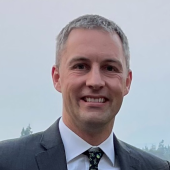
5th Battery and Energy Storage Conference Session 4: Grid-Scale Energy Storage
Friday, November 17 9:00AM-12:30PM CDT at Argonne National Laboratory in Lemont, IL
This session touches on the evolution of new stationary storage solutions for a resilient grid that is based on renewable energy sources. Focus on new materials and concepts that can significantly decrease cost and improve safety and cycleability. Learn about current and future innovations and lessions learned in this session featuring leaders in the field.
Read more about this session's speakers below:
9:00AM-12:30PM: Grid-Scale Energy Storage
9:00-9:30AM: "Catalyzing the Clean Future with All-Iron Redox Flow Batteries"
Invited Speaker: Julia Song, Co-Founder & CTO, ESS, Inc.
The imperative to transition to renewable energy is broadly understood as the world experiences increasingly frequent extreme weather events, driven by climate change. However, intermittent wind and solar generation pose new challenges for maintaining grid stability and it has become clear that energy storage will be critical to ensure the reliability of a predominantly renewable grid. In the rapidly emerging energy storage sector, it is apparent that not all energy storage technologies are created equal. Dr. Julia Song, Co-Founder and Chief Technology Officer of ESS, Inc., will present the company’s iron flow battery technology, which delivers long-duration energy storage to enable renewable energy to power the grid 24/7. ESS technology has been deployed to customer sites in Europe, Australia and across the United States and is providing safe, sustainable energy storage to catalyze the clean energy future.
9:30-10:00AM: "Perspectives on Scale-Up of Zinc Alkaline Batteries for Grid-Scale Energy Storage"
Invited Speaker: Sanjoy Banerjee, Distinguished Professor, Director, and CEO & Executive Chairman, CCNY, CUNY Energy Institute, & Urban Electric Power, Inc
Zinc manganese dioxide (Zn-MnO2) alkaline chemistry is widely used in single discharge (primary AA, AAA, etc.) cells being made from safe, low-cost, earth-abundant, and easily recyclable materials. Groundbreaking research, funded through an ARPA-E GRIDS award at the CUNY Energy Institute, developed this primary battery chemistry to be rechargeable for hundreds of deep cycles. These innovations are being commercialized by a spin-out, Urban Electric Power. Progress in developing, manufacturing, and deploying the rechargeable Zn-MnO2 batteries will be discussed.
10:00-10:30AM: "Sodium-Ion Batteries: Recent Advances, Opportunities, and Challenges"
Invited Speaker: Colin Wessells, Co-Founder and CEO, Natron Energy
This presentatoni introduces an emerging class of batteries based on sodium-ion cell chemistries. Two emerging classes of sodium-ion cells are introduced: one that imitates conventional lithium-ion cells, and another that uses innovative chemistry to achieve substantially different system level performance characteristics. This presentation will also address the major opportunities and challenges for commercialization and high volume manufacturing of sodium-ion cells.
11:00-11:30AM: "Ambri - Commercializing Liquid Metal Batteries for Long-Duration Grid-Scale Stationary Energy Storage Applications"
Invited Speaker: David Bradwell, Co-founder & CTO, Ambri
Ambri is commercializing a high-temperature Liquid Metal (TM) battery for long-duration daily cycling grid-scale energy storage applications such as supporting daily intermittency of wind and solar power. Since the initial invention at MIT in 2005, to starting a company in 2009 (initial investment led by Bill Gates), to a chemistry pivot in 2017, to raising >$150M in 2021 and scaling our team to nearly 200 people, to our present scale-up and commercialization activities, our journey has been expansive, with the ups downs and pivots that often come with tough-tech startups. The unique liquid calcium and solid metallic antimony cell chemistry has exhibited stable cycling capabilities after years of cycling and thousands of full depth-of-discharge cycles, with little-to-no capacity loss. The cell chemistry has also proven itself to be remarkably safe, passing UL1973 safety certification at the cell level, with no protective electronics. Initial system builds have shown the ability to operate fully integrated battery systems with 'self-heated' operation, requiring minimal extra energy to stay warm during regular operation. We are actively building-out an automated robotic commercial-pilot scale manufacturing facility in Massachusetts as we continue to navigate our way to high volume manufacturing to bring our technology to the marketplace at scale.
11:30-11:50AM: "Design and Optimization of Thermal Energy Storage System (TES) Using Thermochemical Material (TCM)"
Ruby-Jean Clark, Senior Engineer, NETenrgy
Buildings dominate primary energy and electricity use in most of the world. Heating is a large load, particularly in cold climates. There is a significant opportunity to use thermal energy storage for heating applications. Thermal energy is stored by increasing the internal energy of a material. This energy can be sensible heat, latent heat, or from thermochemical materials (TCMs), which release or absorb energy through a chemical reaction. TCMs have a fundamental advantage of high theoretical energy densities (200 to 600 kWh/m3) and very minimal self-discharge. However, thermochemical energy storage has yet to be successfully commercialized due to challenges on the material and system integration level. This work was funded by the US Department of Energy and is a product of collaboration between LBNL, NREL and NETenergy LLC. In this study, a promising thermochemical material (CaCl2) to store intermediate temperature energy was investigated for heating applications. Expanded graphite (EG) matrix was used both to enhance heat transfer of the selected salt and provide structural stability to the material. Moreover, an innovative design of graphite block was tested. The suggested block design provided robust mechanical structure, without jeopardizing heat and mass transfer rate. To test the EG-CaCl2 composite, a thermochemical reactor was designed and built. The manufactured composite was tested in the reactor, under different conditions of relative humidity, airflow, reaction time, dehydration temperature, etc. The presentation will discuss the extended cycling results and the effect of various parameters on the composite block stability and energy density.
11:50AM-12:10PM: "Otoro Energy - Safe and Low Cost Flow Batteries for Long Duration Energy Storage"
Michael Marshak, Founder & CEO, Otoro Energy
Otoro Energy is developing a new flow battery chemistry based on low cost metals iron and chromium, combined with organic materials called chelates. Together they provide a high voltage (1.62 V) battery chemistry enabling high power and efficiency operation. Moreover, the aqueous electrolyte is maintained at neutral pH, making the system non-flammable, non-corrosive, and non-toxic. Otoro received an award from the DOE's Advanced Materials and Manufacturing Office (AMMTO) to support the manufacturing, scale-up, and demonstration of a 5-kW system prototype. This talk will provide details on the new battery technology and commercialization efforts.
12:10-12:30PM: "Development of Sustainable Electrode Materials for Sodium-Ion Batteries"
Eungje Lee, Materials Scientist, ANL
Sodium-ion batteries have received extensive attention in recent years with the growing demand of sustainable energy storage systems. As a low-cost alternative to lithium-ion batteries, achieving secure, economical, and diverse materials supply chains is necessary for the successful market penetration of the technology. This presentation will discuss research and development efforts at Argonne National Laboratory aimed at advancing sodium-ion batteries that are based on earth-abundant elements. Synthesis, structure, and property of layered oxide cathodes based on iron and manganese will be presented, and some challenges and insights for commercialization will be discussed.



